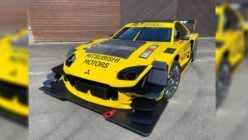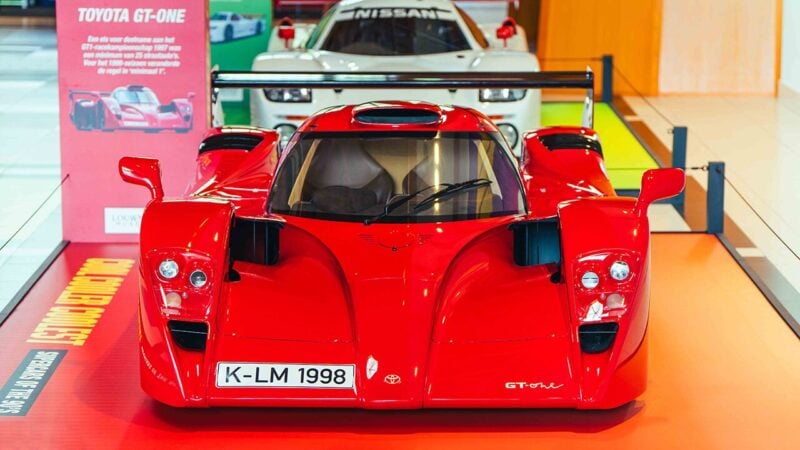
A fleet of legendary vehicles from Gran Turismo’s history have joined a special exhibition of “Supercars of the 90s”, including an extremely rare appearance of the Toyota GT-One road car outside its native Germany.
The exhibition, which runs until September 1, is on display at the Louwman Museum in Den Haag in the Netherlands, and features a range of some of the greatest performance vehicles from one of the more interesting eras of road car manufacturing.
It’s by no means exclusive to Gran Turismo machinery, but around half the cars on display are vehicles or derivatives of vehicles that fans of Gran Turismo games will recall fondly from their digital experiences.
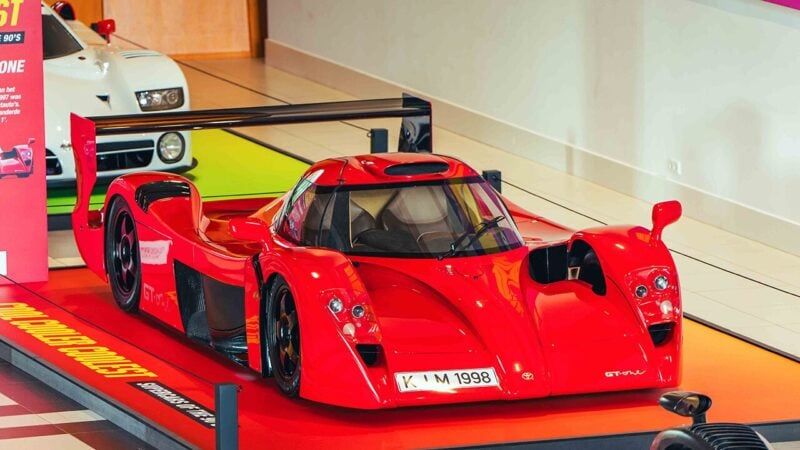
Naturally it’s the Toyota GT-One that’ll probably resonate the most with GT fans. This one-of-one vehicle was built in order to homologate the TS020 for racing in the LMGT1 category at Le Mans, with some incredible rule-bending that included counting the empty fuel tanks as luggage storage space…
Despite being a Japanese brand, the GT-One is actually German. It was designed by Andre de Cortanze, who also created the Peugeot 905, for Toyota Team Europe in Cologne, and the German-registered road car has remained in Cologne almost exclusively since then. It’s a rare opportunity then for members of the public to see it up close.
It was a firm favorite in GT2 and GT3, but hasn’t been seen in the series since then — an absence of more than 20 years. As the museum is pretty close to Polyphony Digital’s European HQ, maybe the team could swing by with a laser scanner or five…
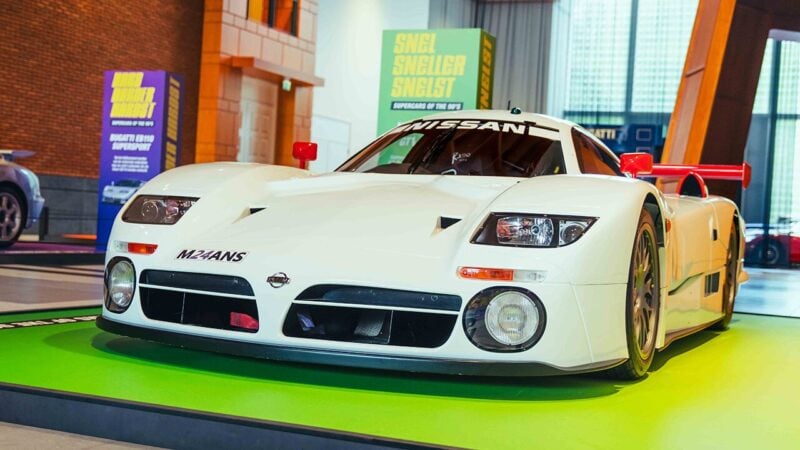
That’s joined by a contemporary of sorts, in the shape of a Nissan R390 GT1 road car last seen in GT6. Nissan took a similar approach, in only building one road car (though other customer cars were planned at $1m each) although the changes from the 1997 season into the 1998 season meant rebuilding it to homologate the upgrades.
However the car on display is actually a race car converted for road use and belonging to Erik Comas — who actually raced the R390 GT1 at Le Mans in 1998. Comas picked up the car, although this one was driven as the #30 by Gran Turismo-connected racer Michael Krumm, and set about having it converted into a road car to realize an almost 20-year ambition.
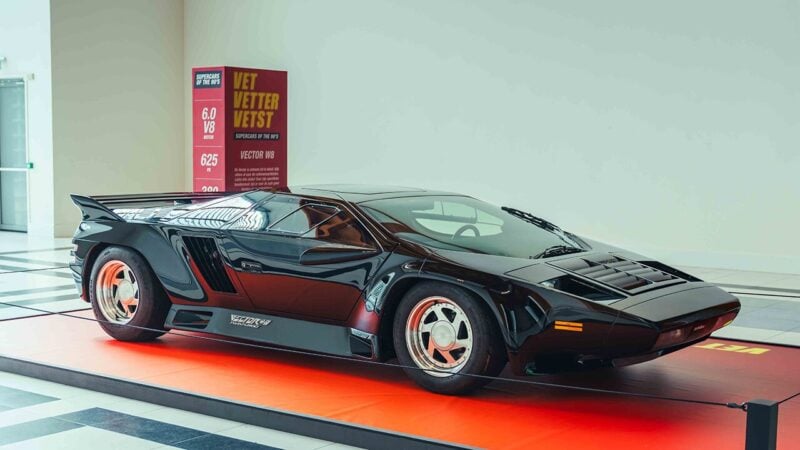
It’s not just roadgoing race cars though, as a gaggle of low-volume cars designed for road use are also in the mix. This Vector W8 is among them, and a very unusual car to see in Europe.
While it’s not clear which of the 17 production examples of the W8 this is, it’s still among the cars that remain closest to Gerald Wiegert’s original design and sports over 600hp from its Rodeck-tuned small block Chevrolet V8 twin-turbo.
As far as we’re aware, the W8’s claimed top speed of over 230mph was never verified, but it’s joined by examples of two cars which did hold the production car speed record and currently appear in the Gran Turismo series.
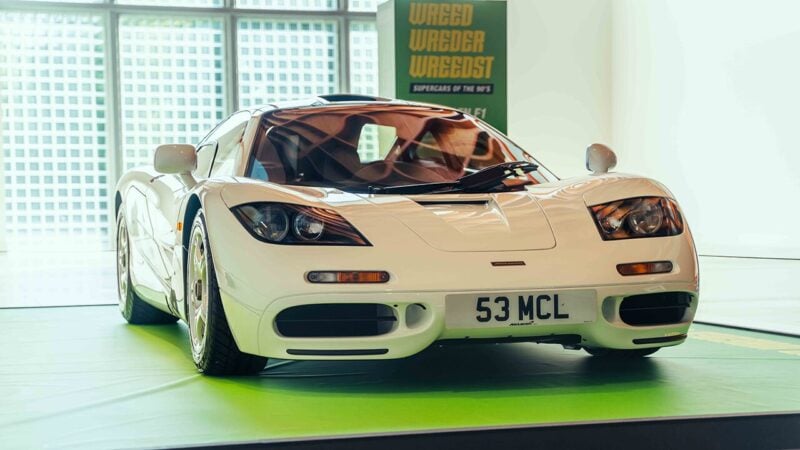
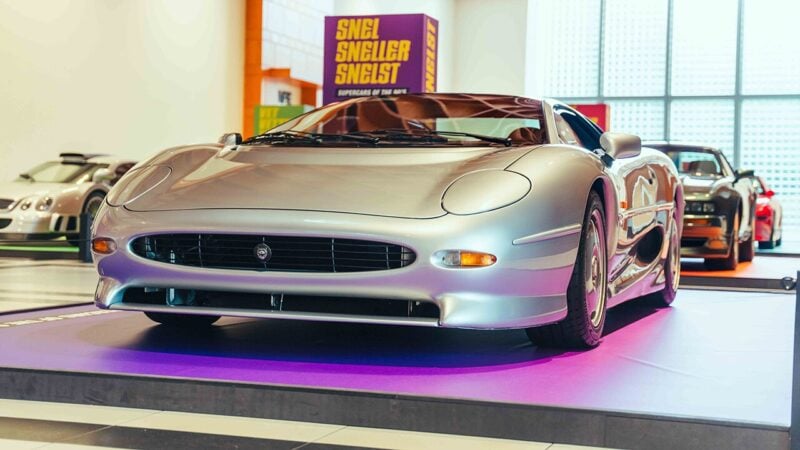
First is the Jaguar XJ220, added into GT7 in update 1.32 a year ago. It was a controversial vehicle in its day, originally planned to marry the Le Mans-winning XJR-9’s V12 with an all-wheel drive system but eventually hitting the showrooms with a twin-turbo version of an engine derived from the Group B MG Metro V6.
Nonetheless, it was briefly the fastest car in the world at 212mph and then 217mph, before being eclipsed by the next vehicle: the McLaren F1. Famous in GT circles for being one of the most expensive cars in the game, this 240mph supercar actually won Le Mans in 1995 despite never being made for racing. This car, #053, is one of only two of the original road cars finished in white.
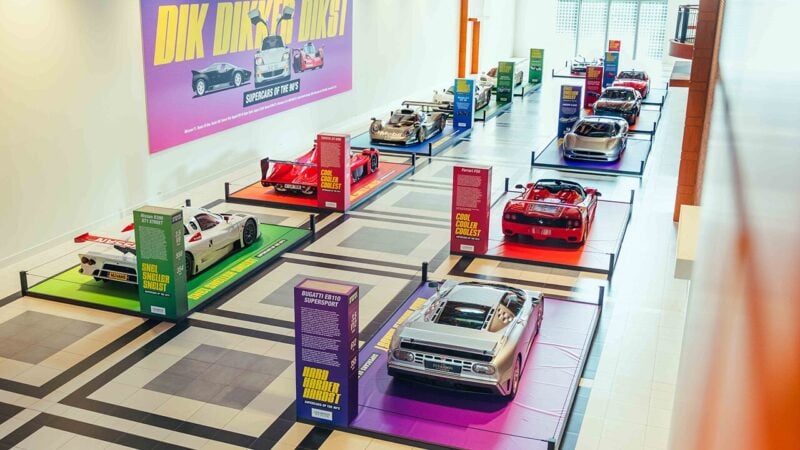
Other cars connected to the Gran Turismo series in the exhibition include the Ferrari F50, the roadgoing version of the Mercedes CLK-GTR (which has only appeared as the V8 CLK-LM race car), a prototype model of the Porsche 911 GT1 Strassenversion (1998, rather than the 1997 model in GT7), and the rare V600 variant of the Aston Martin V8 Vantage from GT2–GT6.
That’s not the end of the exhibition either, which also features the Bugatti EB110 SS, and two exceptionally rare German prototypes, comprising the BMW M8 and Mercedes C112.
Supercars of the 90s is available at the Louwman Museum, which hosts a collection of almost 300 cars covering the history of the automobile, up to September 1. Adult admission to the entire museum, which is open from 10am to 5pm every day, is €19.00. Children aged 5-18 get in for €10.00.
Images courtesy of the Louwman Museum; thanks to Roo for the initial tip!
See more articles on McLaren, Museum, Nissan, Porsche, Toyota, and Vector.









